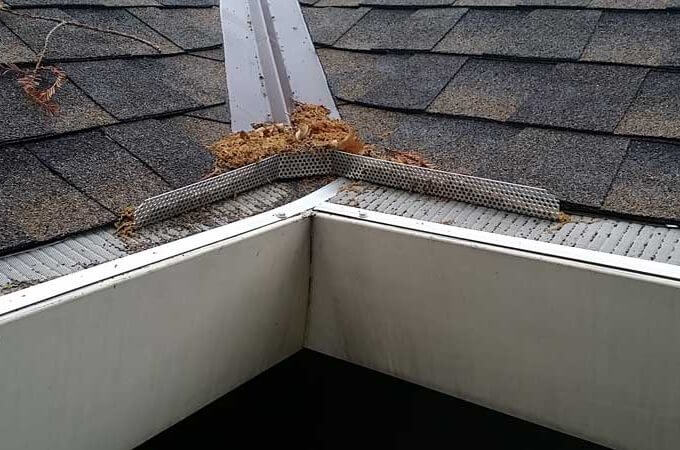The rainwater diverter is a crucial component of the harvesting system. Due to a buildup of blockages, design flaws, inadequate flow rate, freezing weather, and wear and tear, the particular causes of the diverter may not be working effectively, resulting in obstructions and impeding the water flow into the collection tank.
The mechanism of the diverter is interfered with by this obstacle, resulting in ineffective water redirection and possibly overflow problems during heavy downpours. Incorrect installation or diverter damage may also be significant problems.
To fix the problem and improve the efficiency of your rainwater harvesting system, it is essential to understand the potential causes of its malfunction. In this talk, we’ll explore typical causes and practical fixes to get your rainwater diverter again working properly.
7 Reasons why is my rainwater diverter not working
Therefore, a failing rainfall diverter frequently has a variety of causes, from obstructions and design defects to improper installation and weather conditions. Let’s look below:
- Incorrect installation
The most prevalent cause of failure remains improper installation. If the diverter is positioned too high or too low on the downspout, it may fail to capture and divert water adequately. To resolve this, adjusting the diverter at the optimal height or obtaining professional assistance may be required.
- Blockages
Blockage is the most common reason for rainwater diverters to fail.
Over time, your diverter may become blocked with substances, including twigs, leaves, water, and dirt. While the diverter becomes blocked, rainwater may overflow, run down the side of the house, or wind up in undesirable places instead of the storage tank.
Therefore, maintaining your diverter and gutters helps to prevent blockages.
- Wear and tear
Rainwater diverters, like any other outdoor appliance, are prone to wear and strain. This deterioration might result in leaks, which means less water is stored, and more water is squandered.
Depending on the extent of the wear, the diverter may need to be repaired or replaced.
- Design flaws
The design of your rainwater diverter is crucial to its effectiveness. Due to their design, some diverters tend to be more prone to blockages or leakage.
If your diverter keeps breaking down after frequent cleaning and maintenance, consider switching to a more efficient one.
- Inadequate flow rate
Some rainwater diverters are made only to let a certain amount of water run through them. If it rains heavily, the water may move faster than the diverter can handle, causing it to overflow. Moreover, you have to ensure that your rainwater diverter can handle the heaviest rainfall expected in your region.
- Freezing weather
The water in the diverter can freeze in freezing temperatures, preventing it from functioning properly. Therefore, draining the system before and throughout winter can prevent this issue.
- Incorrect size
Diverters for rainwater come in various sizes; if you choose the wrong one, it won’t work as intended. If the diverter needs to be more adequately sized, the discharge may overflow. On the other hand, if it is too large, it may not fit correctly, which may lead to leaks.

How does a rainwater diverter work?
A rainfall diverter is an innovative and environmentally-friendly tool for collecting and reusing rainwater. The procedures necessary to understand how it works are rather simple. So let’s look at the detail below:
- Placement
The rainfall diverter is typically installed at a point along the downspout or gutter system that is technically advantageous, frequently close to the edge of the roof.
- Collection
Water runs from the roof and into the gutters during rainstorms. In that case, the rainfall diverter is attached to the downspout or gutter system that is situated close to the edge of the roof.
- Flow according to gravity
Rainwater diverters utilize a straightforward gravity-based system. Typically, gravity ensures that water travels through the diverter and into the storage container, allowing you to collect and store rainwater for a variety of purposes, including gardening, washing vehicles, watering plants, and even for household usage.
- Automatic shutoff
A common characteristic of rainwater diverters is an automatic shutoff. When the storage container is full, the diverter will shut off so nothing will spill out. The rainwater then continues to flow away from the collection system through the downspout as usual.
- Diversion
The diverter operates as a gateway between the downspout and the container used to collect rainwater. The diverter directs a part of the rainwater that passes through the downspout and into the storage container.
However, by collecting and using rainwater, rainwater diverters help people save water, lower their water bills, and make water management more sustainable.
They also play an important role in reducing the amount of water that runs off during storms, making it easier on city drainage systems and stopping soil erosion. Overall, rainwater diverters are a cheap and environmentally friendly way to use this valuable natural resource.
Tips on how to handle rainwater diverters safely
When dealing with rainwater diverters, remember that safety is most important. Following these guidelines may ensure a safe and successful experience while using rainwater for various reasons.
- Wear safety equipment
When examining or cleaning the rainwater diverter, Wear gloves and safety goggles. It will protect your hands and eyes from debris and any splashes.
- Usage durable equipment
Use an appropriate ladder and secure it to the ground before climbing up onto the roof or gutters to install or maintain the rainwater diverter.
- Inspection on a Regular Basis
It is essential to do regular checks to ensure that the rainfall diverter and collection system are free of obstructions, leaks, and damage. However, resolve any issues as soon as possible.
- Stop the flow of water
Ensure that the downspout flow is stopped before working on the diverter so there’s no unexpected water flow while you are working.
- Children and animals should be kept away
While you are working with the rainwater diverter, it is crucial that you keep young children and animals at a safe distance.
- Observe the manufacturer’s instructions
Follow the rainfall diverter’s installation, use, and maintenance guidelines provided by the manufacturer.
- Avoid Freezing
To avoid damage in cold areas, take precautions to stop the rainfall diverter and collection system from freezing.
- Preventing Chemical Contamination
Be careful when adding contaminants or chemicals to the rainwater collection system to keep the water quality suitable for its intended usage.
- Get Expert Advice
If you are unsure how to handle the rainwater diverter in any way, think about getting professional advice.
- Prevent Overflows
Overflowing water from a collection container poses a safety risk, so it should be checked on a regular basis.
- Scratch-Free Filters/Screens
Rainwater diverter screens and filters should be checked and cleaned regularly. Therefore, water flow efficiency is diminished if screens become clogged.
- Avoid Pest Infestations
Inspect the diverter for insect or pest infestations that could clog it. Take steps to avoid similar incidents in the future.

What to do when your diverter is too low
If your rainfall diverter is set too low, it may prevent rainwater from being collected effectively and lead to overflow problems. You can take the following actions to solve this issue:
- Increase the Downspout’s Length
Consider adding a downspout extension to guide the water flow higher into the diverter or collection container. This may be a practical way to enhance the height at a low cost.
- Adjust the Diverter’s Position
If at all possible, raise the downspout’s rainwater diverter. It will flow into the collection container more smoothly if you raise it to the right height.
- Utilize a Stand for Rain Barrels
Put the container that you’ll be using to collect rainwater on top of a stable stand or platform. When the container is raised to a higher level, more space is available for the diverter, enabling it to work more effectively.
- Set up a Rain Chain
A rain chain can be used in place of a regular downspout. Rain chains are attractive and direct water down into the collection container gracefully, eliminating the need for a diverter.
- Seek Professional Advice
If DIY alternatives are not practical or do not fix the problem, consult a rainwater harvesting specialist or a professional contractor. They may provide specific recommendations and ensure that the rainwater diverter system is properly installed and working.
FAQs
Rainwater diverters require a minimum inlet pressure of 0.05MPa (0.5 bar) and a suggested operating pressure of 1 bar (0.1Mpa) in order to function effectively. As gravity-based systems, they can efficiently redirect roof downspout flow with minimal water pressure into a collection container or rain barrel.
There are many different types of rainwater diverters, including:
1. Commercial diverters.
2. Tipping gutter diverters.
3. Wall/post diverters.
4. Downpipe diverters.
5. In-ground diverters.
Rainwater diverters can generate unusual noises for numerous reasons. Loose parts, debris, obstructions, and water pressure variations all produce vibrations. Inspecting and fixing the diverter can reduce noise and improve performance. If the noises persist, a specialist can help identify and fix the problem.
Yes, extreme weather conditions can have an impact on a rainwater diverter’s function. Heavy rain, storms, or freezing conditions can all impact the diverter’s ability to gather and redirect rainwater. To ensure the diverter works well, it’s crucial to think about the weather and make any necessary adjustments.
Final Verdict
Clogs, misalignment, damage, or leaks can all cause a rainwater diverter to stop working. Regular maintenance is essential for optimal operation.
Follow the troubleshooting procedures to discover and resolve issues quickly. If you are still deciding, get expert assistance. To maximize the benefits of rainwater collection, preserve water, and cut expenses, a working diverter is essential.
Remember that keeping a diverter in good functioning order contributes to sustainable practices and eco-friendly living. Keep gutters clean, inspect screens or filters, and think about investing in excellent diverters for long-term effectiveness.
With a well-maintained system, you may enjoy enough rainwater for various purposes while encouraging water conservation and environmental stewardship.

